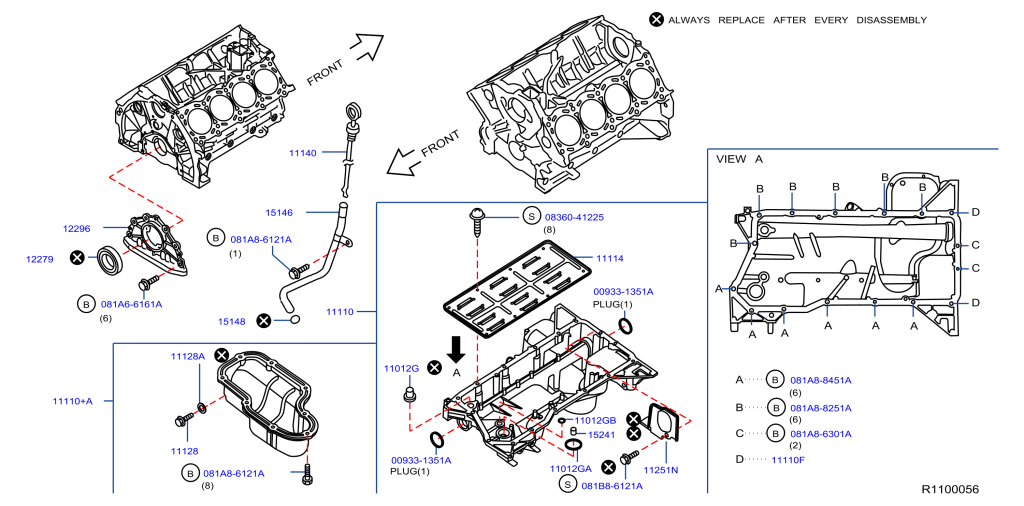The correct sequence for your 2001 Nissan Altima’s spark plugs to fire, or the firing order, is 1-3-4-2. It’s important to get this right for your car’s engine to work properly.

The cylinders and spark plugs follow this order. The first cylinder is near the timing cover. If the firing order is wrong, your car might not perform well. It could cause the engine to misfire.
This could cause problems like using more fuel than usual and making the engine sound rough. Knowing your car’s firing order and other details can help you figure out why your engine light might be on or why your car shakes when you speed up.
Quick Navigation
Key Takeaways
- The 2001 Nissan Altima uses a specific pattern, 1-3-4-2, to make the engine work best.
- The first cylinder is right next to the timing cover in the engine area.
- The engine sets off the spark plugs in the 1-3-4-2 pattern.
- A picture showing this pattern can help identify where the spark plugs are and the order they’re set off.
- If the pattern is wrong, the engine might not work properly, it might not run smoothly, and it could use more gas.
Understanding 2001 Altima Firing Order

Knowing the firing order of your 2001 Nissan Altima can help your car run better. The firing order, which is 1-3-4-2, shows the order in which the spark plugs ignite. This starts with the first cylinder. This order is important because it helps keep the engine running smoothly and without shaking.
If the firing order is wrong, it can mess up how your car runs. So, knowing the correct order, 1-3-4-2, can help you take care of your Altima’s ignition system. This isn’t just about keeping your engine running. It’s also about making it run its best.
Symptoms of Engine Misfire
If the engine of your 2001 Nissan Altima is not working properly, you might experience things like rough engine sounds or your car might use more gas than usual. These signs could mean your engine is not firing correctly and you should look for ways to fix it right away.
Your car might also start to shake or feel like it’s struggling, especially when you’re speeding up. You might even see your engine light turn on.
Here’s a simple chart to help you spot common signs of engine problems:
| Sign | Possible Reason | How to Figure Out What’s Wrong |
|---|---|---|
| Rough engine sounds | Engine not firing correctly | Check the spark plug |
| Using more gas than usual | Engine not firing correctly | Look for problems with the fuel system |
| Struggling to speed up | Engine not firing correctly | Check the ignition system |
| Engine light turns on | Engine not firing correctly | Use a tool to diagnose the problem |
| Shaking when speeding up | Engine not firing correctly | Look for problems with the engine timing |
You should act quickly if you notice these signs to avoid causing more damage to your Nissan Altima.
Cylinder and Spark Plug Positioning
Let’s talk about where the cylinders and spark plugs are in your 2001 Nissan Altima. Your car has a four-cylinder engine, and these cylinders and spark plugs are arranged in a certain way. The first cylinder is at the front of the engine, close to the timing cover.
The timing of when the spark plugs fire is really important for your car to run smoothly. They should fire in a 1-3-4-2 order. If they don’t fire in this order, the engine can start to misfire, which means it’s not running as efficiently as it could be. Misfires can happen if the spark plugs aren’t firing correctly, throwing off the timing. If you notice this happening, it’s a good idea to get a tune-up to get your car running at its best again.
Engines with Similar Firing Orders
Conclusion
So, you’ve successfully understood your Nissan’s system and the sequence that gets your Altima running.
It’s important to know the correct firing order for the best performance.
If your car makes strange noises, you might need to check the condition of the cylinders.
Comparing with other cars can help you understand better.
Keeping your motor in good condition isn’t a mystery anymore!
With this knowledge, you can confidently fix your car and keep your Altima running smoothly.

